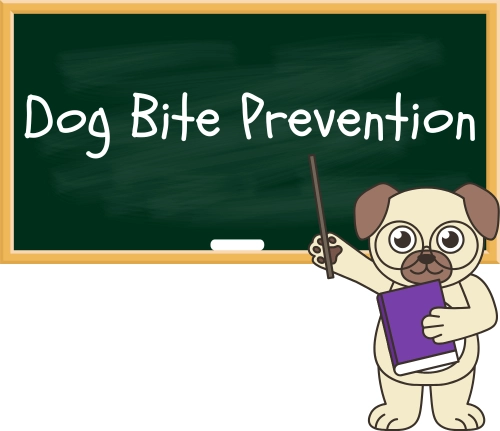Key Takeaways
Dog bites are common — About 4.5 million people are bitten by dogs each year in the U.S., and children are at the greatest risk.
Most bites are preventable — The majority happen in familiar settings with dogs the person knows.
Body language matters — Dogs communicate through posture, facial expressions, and movement. Learning to recognize both obvious and subtle signals is key.
Children need guidance — Young kids are especially vulnerable due to their size, behavior, and inability to read dog behavior and body language.
Education is the solution — Prevention begins before a bite ever happens. By learning more about canine communication, families can stay safer and deepen their bond with their dogs.
April 13-19, 2025 is National Dog Bite Prevention Week, so we are coming to you with a public service announcement to help you and the pets you interact with. Dog bites are more common than many people realize. In the United States, an estimated 4.5 million people are bitten by dogs annually, and roughly 800,000 of those bites result in medical care costing an estimated $252 million in medical expenses. Dogs can bite anyone, but they pose the greatest risk to children, especially those under the age of 9. Young children, particularly those under 6, are more likely to suffer serious injuries due to their size and the way they typically interact with dogs.
Despite how frequent these incidents are, most dog bites are not random. In fact, many occur in familiar settings and involve dogs the person knows. The good news? Most of these bites are preventable through education, awareness, and understanding canine communication.
At Burnell Pets, we’re proud to share that one of our co-founders is now a Certified Dog Bite Prevention Educator. With that certification comes a new opportunity to help families and pet owners better understand dog behavior and prevent dog bites before they happen.
Dogs Are Communicating — Are You Listening?

Dogs don’t use words, but they are constantly communicating through body language. When those signals go unnoticed or are misinterpreted, dogs may become stressed, scared, or feel forced to defend themselves. That’s when bites can happen.
Some common warning signs include:
Whale eyes (showing the whites of the eyes)
Yawning or lip licking when not tired or hungry
Turning away or leaning away from a person
Tense posture or a tucked tail
Growling, freezing, or snapping
Many people recognize these more obvious signals, but there are also subtle or less familiar behaviors that can easily go unnoticed or misunderstood. Some signals may even seem confusing or opposite of what we expect. Dogs can show conflicting behaviors, which can make it harder to understand what they’re really trying to communicate. Learning to recognize all of these communication cues, both the obvious and the subtle, can make a big difference.
Children and Dogs: A Relationship That Needs Guidance

Children are the most frequent victims of dog bites, often from dogs they know. Out of the 4.5 million dog bites annually in the United States, about 2.5 million of those occur in young children. Researchers estimate that a child has a greater than 50% chance of being bitten by a dog in their lifetime. Research has identified some subgroups that may be particularly vulnerable to dog bites. These includes males and children with ADHD. In fact, research out of the University of Massachusetts Medical School suggests “Attention-deficit hyperactivity disorder (ADHD), particularly in males, has been shown to be associated with a 21% increase in odds of presenting to an ED (emergency department) with a dog bite injury“. Though the researchers clearly state that “this potentially contributing factor hasn’t been fully explored.”
But why are children seemingly more vulnerable to dog bites? Children often interact in ways that feel natural to them (like hugging or getting close to a dog’s face) but can make dogs uncomfortable. They also may not know or understand what a dog is telling them.
Helping children learn how to be safe and respectful around dogs is one of the best ways to protect both the child and the pet. With that said, this information is for all ages, not just children under the age of 9 or 10. So what do we need to do to better understand dogs to reduce the risk of a bite? Bite prevention simply starts with education.
Education is Prevention

Most people only seek help after a bite happens — but prevention starts long before that. Our upcoming services will focus on helping pet owners build stronger, safer, and more respectful relationships with their dogs by learning how to:
Recognize and interpret dog body language
Understand how dogs experience stress
Prevent situations that could lead to discomfort or bites
Build better communication between dogs and humans
Our goal is to provide approachable, family-friendly education that empowers pet owners to feel confident and informed.
Want to Learn More?
We’re currently developing our Dog Bite Prevention services, and we’d love to hear from you. If you’re curious, have specific questions, or want help understanding your dog’s behavior, reach out through the contact form on our website.
When we take the time to understand our dogs better, we create safer homes and stronger bonds, and that benefits everyone.
